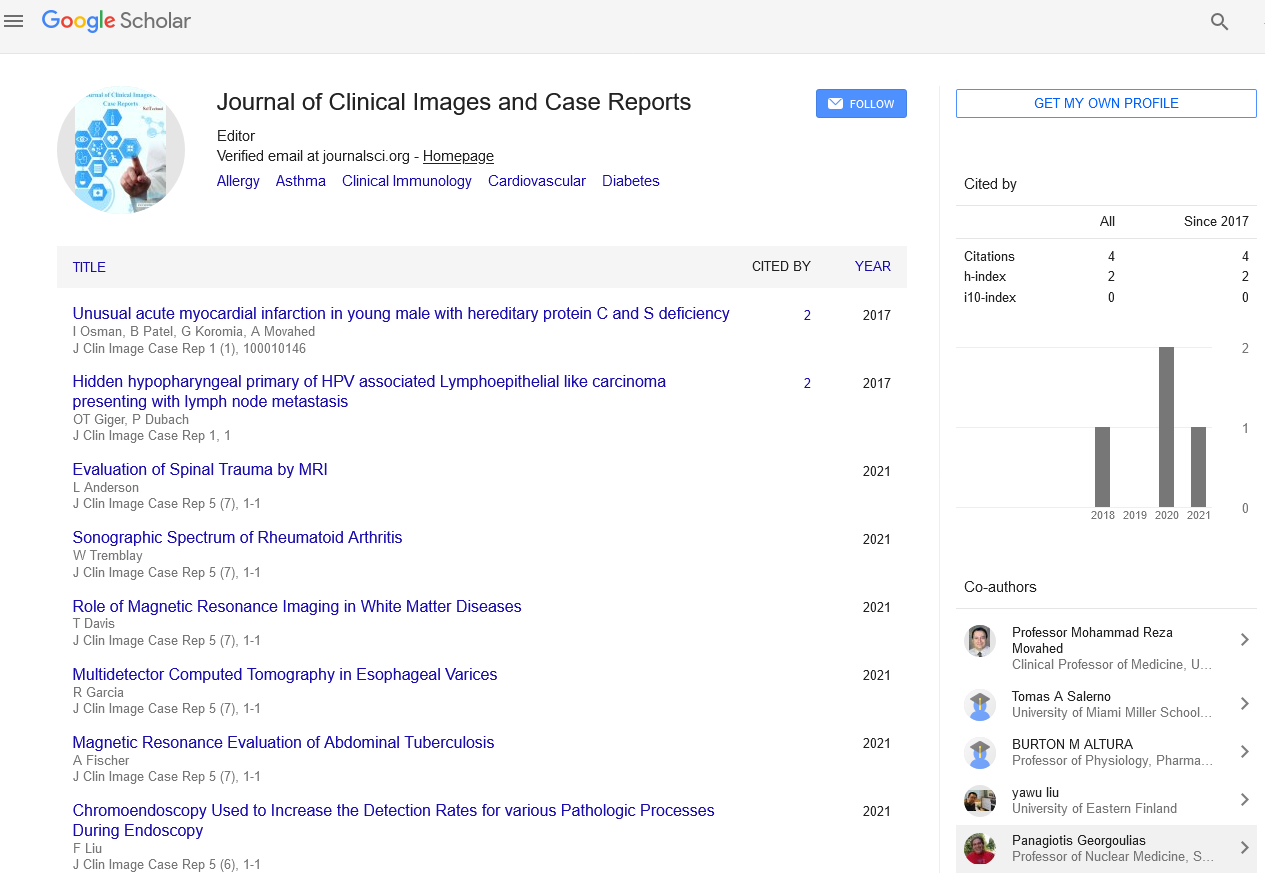Perspective, J Clin Image Case Rep Vol: 8 Issue: 5
The Essential Role of Echocardiography in Diagnosing Heart Disease
Beraud Gargas*
1Department of Cardiology, Sorbonne University, Paris, France
*Corresponding Author: Beraud Gargas,
Department of Cardiology, Sorbonne
University, Paris, France
E-mail: gargasberaud@gmail.com
Received date: 25 September, 2024, Manuscript No. CICR-24-153584;
Editor assigned date: 27 September, 2024, PreQC No. CICR-24-153584 (PQ);
Reviewed date: 11 October, 2024, QC No. CICR-24-153584;
Revised date: 18 October, 2024, Manuscript No. CICR-24-153584 (R);
Published date: 25 October, 2024, DOI: 10.4172/CICR.1000324
Citation: Gargas B (2024) The Essential Role of Echocardiography in Diagnosing Heart Disease. J Clin Image Case Rep 8:5.
Description
Echocardiography, often referred to as an echocardiogram, is a pivotal diagnostic tool in cardiology. It uses sound waves to produce images of the heart, enabling healthcare providers to visualize its structure, function and blood flow. This non-invasive procedure has become indispensable in diagnosing heart disease, as it provides valuable insights into the heart's health without the need for more invasive tests.
Understanding echocardiography
Echocardiography works by emitting high-frequency sound waves through a device called a transducer, which is placed on the chest. These waves bounce off the heart and return to the transducer, creating real-time images of the heart. The procedure is pain-free, takes less than an hour and does not involve radiation, making it a safe and effective method for assessing heart health.
There are various types of echocardiograms, including Transthoracic Echocardiography (TTE), Transesophageal Echocardiography (TEE) and Doppler echocardiography. TTE is the most common, where the transducer is placed on the chest. TEE is used when clearer images are needed, often when the TTE is not sufficient. Doppler echocardiography helps assess blood flow through the heart and blood vessels, providing important information about circulation.
Role in diagnosing heart disease
Heart disease encompasses a wide range of conditions, from coronary artery disease to heart valve disorders. Echocardiography plays a critical role in diagnosing these conditions by providing realtime images of the heart’s chambers, valves and blood vessels. It is especially helpful in identifying abnormalities. Echocardiography can detect damaged or malfunctioning heart valves. It provides detailed information on the heart’s valve function, which is vital for diagnosing conditions like mitral regurgitation, aortic stenosis and tricuspid valve problems.
By assessing the heart’s pumping ability, echocardiography can determine the extent of heart failure. It measures the ejection fraction, which reflects the percentage of blood pumped out of the heart with each beat. A lower ejection fraction is often seen in patients with heart failure. Echocardiograms can help diagnose cardiomyopathy, a condition in which the heart muscle becomes weakened or enlarged, affecting its ability to pump blood effectively. By observing the size and shape of the heart’s chambers, doctors can assess the severity of the condition.
Echocardiography is also important in detecting congenital heart defects, such as holes in the heart walls or abnormal blood flow patterns. It can identify these conditions early in life, allowing for prompt intervention. An echocardiogram can also detect aneurysms in the heart, particularly in the aorta. The images produced allow doctors to assess the size and location of the aneurysm, which is critical in determining the necessary course of treatment.
Echocardiography has revolutionized the way heart disease is diagnosed and managed. By providing detailed, real-time images of the heart, it allows healthcare providers to identify a wide range of cardiovascular conditions, from structural defects to heart failure. Its non-invasive nature, coupled with its comprehensive diagnostic capabilities, makes it an essential tool in modern cardiology. As heart disease remains one of the leading causes of death worldwide, the importance of echocardiography in early detection and treatment cannot be overstated.
 Spanish
Spanish  Chinese
Chinese  Russian
Russian  German
German  French
French  Japanese
Japanese  Portuguese
Portuguese  Hindi
Hindi 